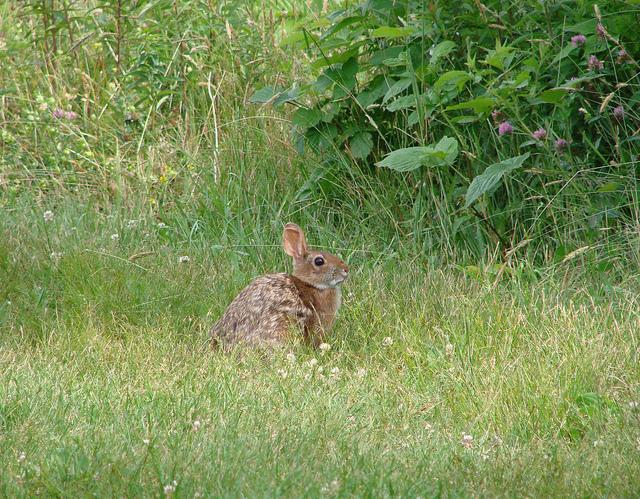- Tags:
- Wildlife,
- Something Wild

New England cottontail rabbits are among the 169 species of special concern addressed in the NH Wildlife Action Plan.
Something Wild asks: "Want to get wonky?"
There’s no way around it. This week, Something Wild is a little thick. Like hundreds of pages thick but stay with us.
The state’s Wildlife Action Plan is a monumental document about New Hampshire’s flora and fauna. Amanda Stone with UNH Cooperative Extension, summed it up pretty well recently on NHPR’s The Exchange. “It’s an incredible valuable body of info about wildlife and habitat that we have for communities, land owners and conservation groups to use in their conservation planning when they’re working to protect their natural resources.” She was on the team that drew up this blueprint for conserving species in New Hampshire. And it can basically be broken down into two broad categories: animals and habitat.
The Animals
The plan has lists 169 species in New Hampshire as having the “Greatest Conservation Need.” This includes 14 threatened species, 27 endangered species and many others; everything from massive moose to the tiny long-tailed shrew and field sparrow, as well as dozens of species of reptiles, fish and even insects.
These 169 are the species of greatest conservation need. And the question becomes how do we best protect such a diverse collection of animals? On the surface the answer is pretty simple, by protecting and fostering the growth of their preferred habitats. But that’s not as simple as it sounds because of the second broad category of the action plan: habitats.
The Habitat Maps
In addition to the hundreds of pages profiling species and their status in NH, there are also hundreds of maps. One of which breaks down the state into general habitat types: flood plain, grasslands, alpine, etc. To a biologist this map indicates which animals are living where, based on a given species preference for a particular habitat. You’ll find Blandings turtles on flood plains, for example; Field sparrows in grasslands; and Bicknell’s thrush in alpine areas.
Another map in the WAP takes the first map and highlights the highest ranked habitats. For example, you can see here how the “riparian corridors” (also known as rivers) are highlighted. It isn’t a new concept that wetlands are valuable for a broad range of wildlife, but this document underscores it.
When looking at these maps, scale is an important factor, because you can zoom out to take the ten-thousand foot view. From there you can see broad habitat patterns and how climate change, development and pollution affect certain habitats. Biologists can identify groups of species that are all under the same threat. If you can address that threat in some broad way, you might be able to benefit 100 of those 169 species in one fell swoop. Conservation biologists have limited funding and personnel. They can’t fix everything, so, where is the highest need? Where do they focus their efforts? Which federal funding can be brought to bear?
But you don’t have to be a conservationist to use the maps. You can also zoom in to see where your house is and what sort of habitat you inhabit. Stone explained how one landowner landscaped his yard to better accommodate the species listed in the Action Plan. “There are sections of his yard that he doesn’t mow, that he lets the grasses and wildflowers grow up; a section of his yard that he allows to have shrubs – berry producing shrubs, for wildlife.” It’s important to remember that you don’t need 40-acres of pine stand to have a positive impact on some of these listed species.
